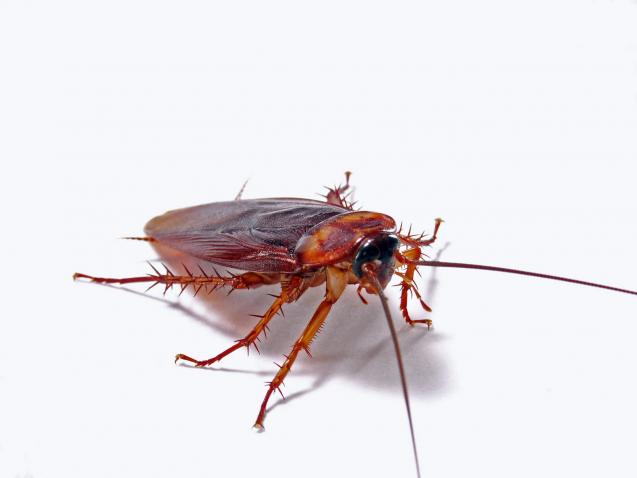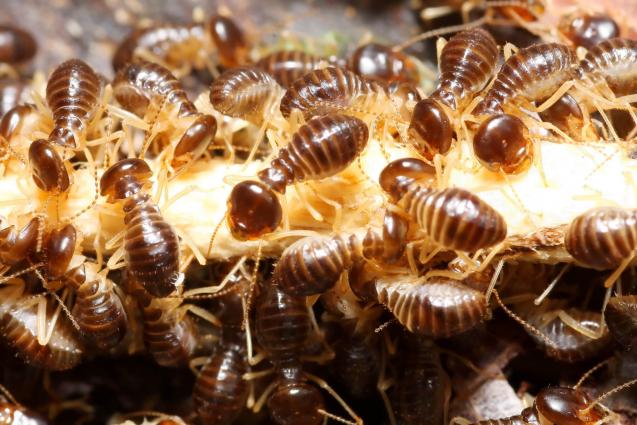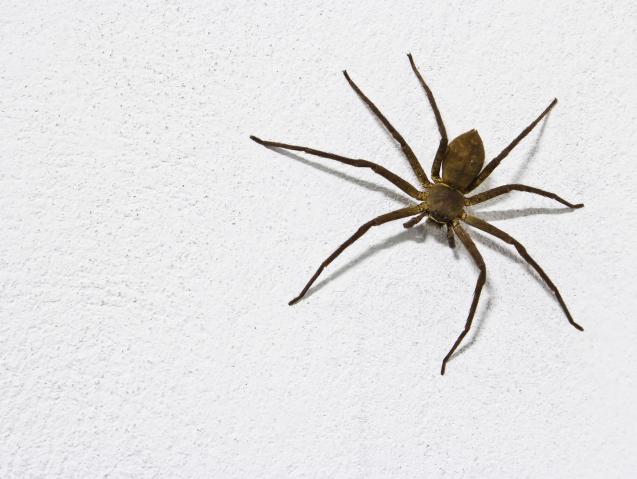
Top 10 Summer Pests in Australia and How to Manage Them
By Dependable Pest Control|November 27, 2024
Australia's summer is a vibrant time of year, characterized by the sun's warmth, flourishing plant life, and, unfortunately, an increase in pesky invaders. We're talking about critters that can turn a pleasant evening into an itchy, buzzing affair. The country's diverse climate makes it a hotspot for various pests, all seeking refuge in or around the comfort of our homes. Proper pest management is crucial for maintaining health and comfort and safeguarding our properties against damage. This article examines Australia's most common summer pests and offers strategies to manage them effectively. From mosquitoes to bed bugs, each pest brings its challenges, but with the right approach, they can be managed and controlled.
1. Mosquitoes
Known to thrive in warmer climates, mosquitoes find Australian summers particularly hospitable. The combination of stagnant water sources and high temperatures provides ideal breeding conditions. Besides their bites' discomfort, mosquitoes pose significant health risks as carriers of diseases like Dengue fever and the Ross River virus. To manage these nuisances, starting by eliminating common breeding grounds around the home, such as stagnant water in birdbaths, planters, and gutters, is crucial. Installing screens on windows and doors can help keep mosquitoes out while using insect repellent, and wearing long sleeves can prevent bites during outdoor activities.
2. Flies
Flies are another frequent summer visitor, and in Australia, they come in various forms, including houseflies and blowflies. These pests are more than just an annoyance; they are known to spread bacteria and contribute to health hazards if not managed. Reducing fly infestations begins with proper waste management—ensuring rubbish bins are sealed and emptied regularly. Cleanliness is key, as flies are attracted to food waste and unhygienic surfaces. Homemade solutions like apple cider vinegar traps and commercial sprays can effectively control fly populations and create a more pleasant environment.
3. Ants
Ants are a common sight during the Australian summer, with species such as the Australian bull ant and Argentine ant often seeking food and water indoors. Their presence is more than a minor inconvenience as they can cause property damage and contaminate food sources. Preventing ant invasions requires sealing entry points, maintaining clean kitchens, and storing food in airtight containers. Vinegar and cinnamon can be effective deterrents for those looking to control ants naturally. However, chemical solutions may be necessary to eradicate ant colonies around the home when all else fails.
4. Cockroaches
Cockroaches are among the most disliked pests due to their resilience and rapid reproduction rates in warm weather. In Australia, German and American cockroaches are particularly active, posing health concerns as they spread allergens and bacteria. Recognizing an infestation might involve spotting droppings or eggs in dark, damp areas. Prevention is better than cure, so it's essential to maintain high hygiene standards both in and outside the home. Cockroach traps, gel baits, or consulting professional pest control services can help manage these unwelcome guests.
5. Spiders
Australia is home to several spider species, both venomous and non-venomous. While spiders can be beneficial in controlling other insect populations, they pose risks when encountering venomous types such as the Redback or Funnel-web spiders. Effective spider management involves removing clutter where they may hide and trimming vegetation from the home. When necessary, contacting pest control experts for removal ensures that potentially dangerous spiders are dealt with safely.
6. Moths
Though small, moths can cause significant damage, particularly to clothing and stored food items. Moth infestations peak during the summer, with species like the pantry moth and clothes moth being common culprits. Preventive measures include storing clothes and food in sealed containers and using natural moth repellents like cedar or lavender. If a moth infestation occurs, thoroughly cleaning affected areas and using pheromone traps can help manage the situation effectively.
7. Bees and Wasps
While bees and wasps play an essential role in the ecosystem as pollinators, they can also present risks, particularly when disturbed during the summer. Distinguishing between solitary and social bee and wasp species is key when managing their activity near homes. Solitary species are generally harmless, while social species like the European wasp can be aggressive when provoked. To manage these insects, it is advisable to keep sweet foods and drinks covered when outside and consult professionals for removing nests safely.
8. Silverfish
Silverfish are nocturnal pests drawn to Australian homes' humid, dark corners. These pests are particularly attracted to paper and fabric materials, causing damage to books, wallpaper, and clothing. Preventing silverfish involves reducing humidity through proper ventilation and using dehumidifiers. Natural remedies, such as diatomaceous earth, can help control their populations, and adhesive traps can be employed to treat more severe infestations.
9. Termites
The summer's warm and humid conditions heighten the activity of termites, sometimes referred to as the "silent destroyers" of properties. This summer pest surge often catches homeowners off guard, as termites work quietly and can cause significant structural damage before their presence is detected. Recognizing a termite infestation early is crucial, with signs such as hollow-sounding wood and mud shelter tubes indicating their activity. Prevention focuses on controlling moisture around the home and carefully selecting building materials. Professional termite inspections and treatments are vital in managing these persistent pests.
10. Bed Bugs
With the increase in travel during the tourist season, bed bugs have seen a resurgence, making their way into Australian homes and accommodations. Identifying a bed bug infestation can be tricky, but signs such as bite marks or small bloodstains on bedding are common indicators. Eradicating them involves thorough cleaning and vacuuming of affected areas, washing bedding at high temperatures, and using mattress encasements. Preventing future infestations involves practicing good travel habits, such as inspecting luggage and clothes upon returning home.
Managing the surge of summer pests is essential for maintaining comfort, health, and the integrity of homes in Australia. Early identification and consistent management are crucial to keeping these nuisances at bay. Homeowners can enjoy a comfortable and pest-free environment by adopting preventative measures such as msummeaintaining cleanliness and employing targeted pest control strategies. When needed, professional pest control services offer an added layer of protection, ensuring that no unwanted visitors outstay their welcome during the hotter months.
1. Mosquitoes
Known to thrive in warmer climates, mosquitoes find Australian summers particularly hospitable. The combination of stagnant water sources and high temperatures provides ideal breeding conditions. Besides their bites' discomfort, mosquitoes pose significant health risks as carriers of diseases like Dengue fever and the Ross River virus. To manage these nuisances, starting by eliminating common breeding grounds around the home, such as stagnant water in birdbaths, planters, and gutters, is crucial. Installing screens on windows and doors can help keep mosquitoes out while using insect repellent, and wearing long sleeves can prevent bites during outdoor activities.
2. Flies
Flies are another frequent summer visitor, and in Australia, they come in various forms, including houseflies and blowflies. These pests are more than just an annoyance; they are known to spread bacteria and contribute to health hazards if not managed. Reducing fly infestations begins with proper waste management—ensuring rubbish bins are sealed and emptied regularly. Cleanliness is key, as flies are attracted to food waste and unhygienic surfaces. Homemade solutions like apple cider vinegar traps and commercial sprays can effectively control fly populations and create a more pleasant environment.
3. Ants
Ants are a common sight during the Australian summer, with species such as the Australian bull ant and Argentine ant often seeking food and water indoors. Their presence is more than a minor inconvenience as they can cause property damage and contaminate food sources. Preventing ant invasions requires sealing entry points, maintaining clean kitchens, and storing food in airtight containers. Vinegar and cinnamon can be effective deterrents for those looking to control ants naturally. However, chemical solutions may be necessary to eradicate ant colonies around the home when all else fails.
4. Cockroaches
Cockroaches are among the most disliked pests due to their resilience and rapid reproduction rates in warm weather. In Australia, German and American cockroaches are particularly active, posing health concerns as they spread allergens and bacteria. Recognizing an infestation might involve spotting droppings or eggs in dark, damp areas. Prevention is better than cure, so it's essential to maintain high hygiene standards both in and outside the home. Cockroach traps, gel baits, or consulting professional pest control services can help manage these unwelcome guests.
5. Spiders
Australia is home to several spider species, both venomous and non-venomous. While spiders can be beneficial in controlling other insect populations, they pose risks when encountering venomous types such as the Redback or Funnel-web spiders. Effective spider management involves removing clutter where they may hide and trimming vegetation from the home. When necessary, contacting pest control experts for removal ensures that potentially dangerous spiders are dealt with safely.
6. Moths
Though small, moths can cause significant damage, particularly to clothing and stored food items. Moth infestations peak during the summer, with species like the pantry moth and clothes moth being common culprits. Preventive measures include storing clothes and food in sealed containers and using natural moth repellents like cedar or lavender. If a moth infestation occurs, thoroughly cleaning affected areas and using pheromone traps can help manage the situation effectively.
7. Bees and Wasps
While bees and wasps play an essential role in the ecosystem as pollinators, they can also present risks, particularly when disturbed during the summer. Distinguishing between solitary and social bee and wasp species is key when managing their activity near homes. Solitary species are generally harmless, while social species like the European wasp can be aggressive when provoked. To manage these insects, it is advisable to keep sweet foods and drinks covered when outside and consult professionals for removing nests safely.
8. Silverfish
Silverfish are nocturnal pests drawn to Australian homes' humid, dark corners. These pests are particularly attracted to paper and fabric materials, causing damage to books, wallpaper, and clothing. Preventing silverfish involves reducing humidity through proper ventilation and using dehumidifiers. Natural remedies, such as diatomaceous earth, can help control their populations, and adhesive traps can be employed to treat more severe infestations.
9. Termites
The summer's warm and humid conditions heighten the activity of termites, sometimes referred to as the "silent destroyers" of properties. This summer pest surge often catches homeowners off guard, as termites work quietly and can cause significant structural damage before their presence is detected. Recognizing a termite infestation early is crucial, with signs such as hollow-sounding wood and mud shelter tubes indicating their activity. Prevention focuses on controlling moisture around the home and carefully selecting building materials. Professional termite inspections and treatments are vital in managing these persistent pests.
10. Bed Bugs
With the increase in travel during the tourist season, bed bugs have seen a resurgence, making their way into Australian homes and accommodations. Identifying a bed bug infestation can be tricky, but signs such as bite marks or small bloodstains on bedding are common indicators. Eradicating them involves thorough cleaning and vacuuming of affected areas, washing bedding at high temperatures, and using mattress encasements. Preventing future infestations involves practicing good travel habits, such as inspecting luggage and clothes upon returning home.
Managing the surge of summer pests is essential for maintaining comfort, health, and the integrity of homes in Australia. Early identification and consistent management are crucial to keeping these nuisances at bay. Homeowners can enjoy a comfortable and pest-free environment by adopting preventative measures such as msummeaintaining cleanliness and employing targeted pest control strategies. When needed, professional pest control services offer an added layer of protection, ensuring that no unwanted visitors outstay their welcome during the hotter months.



